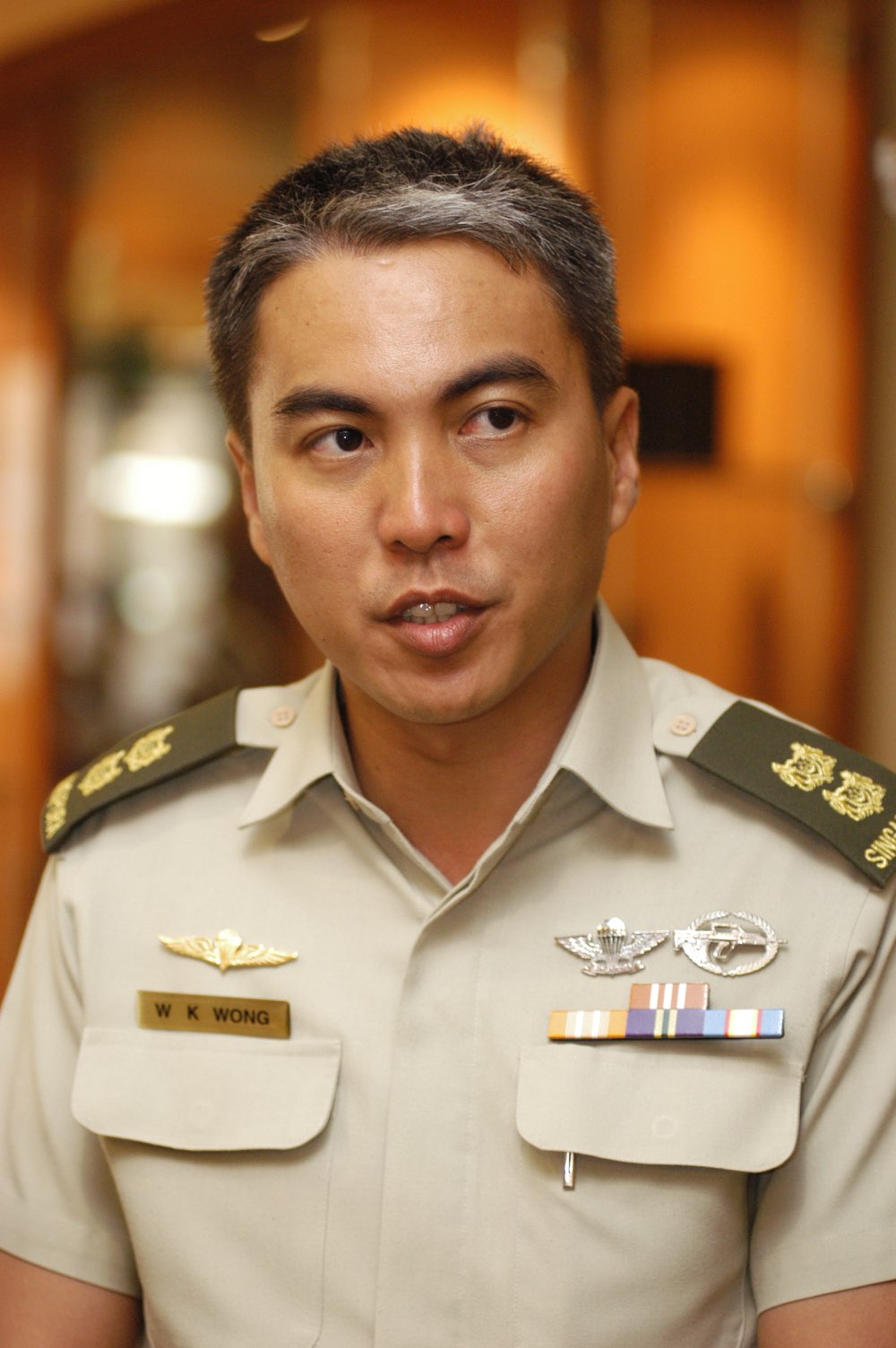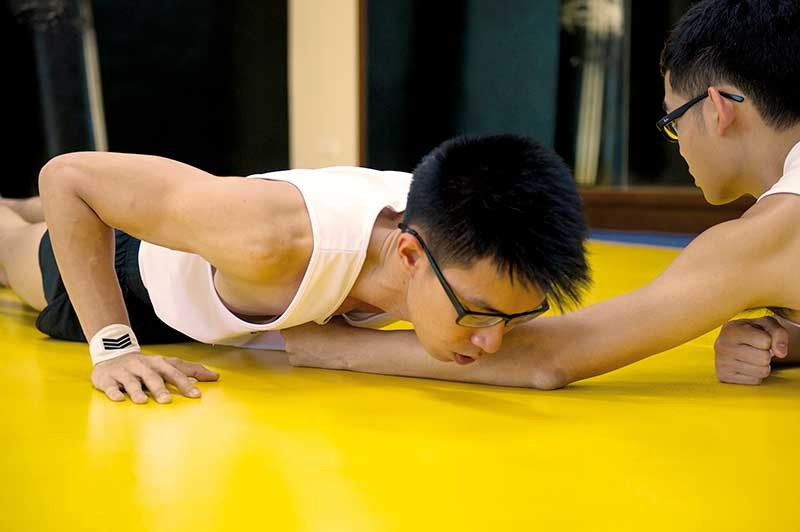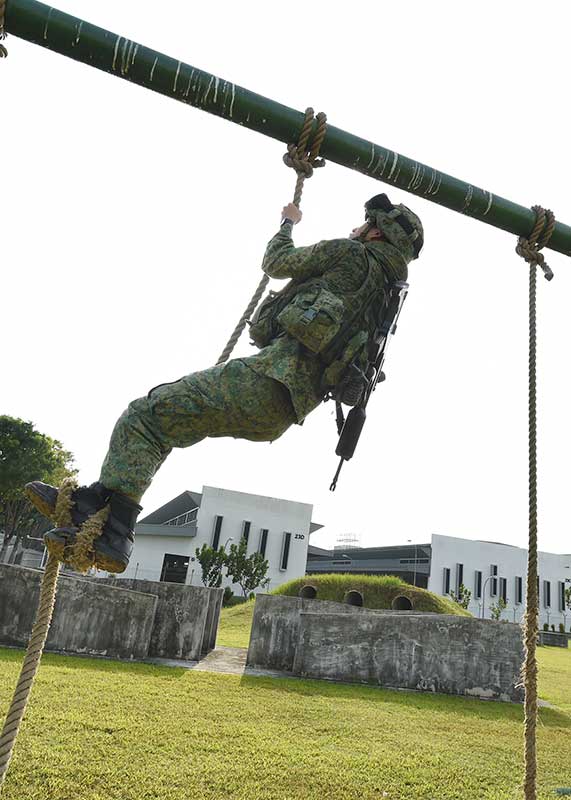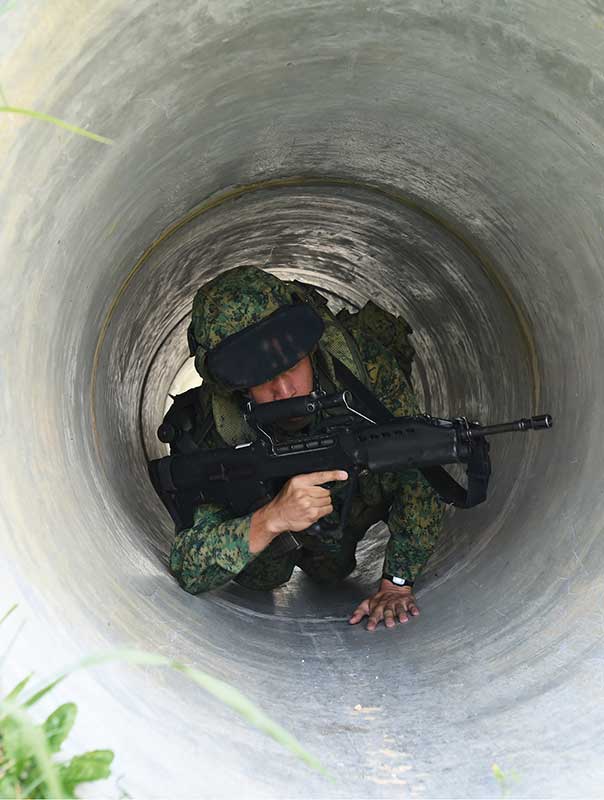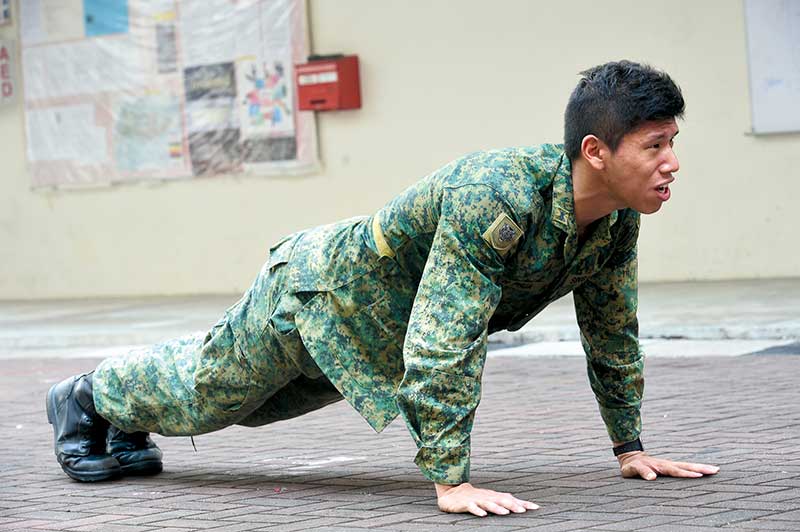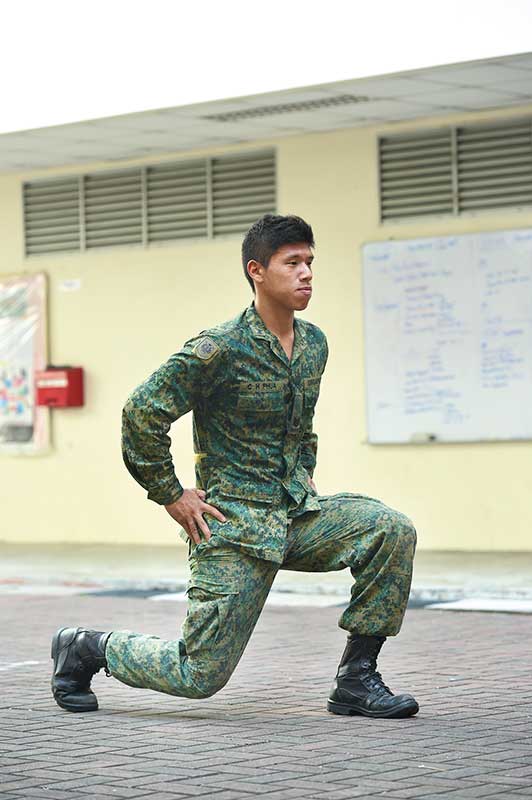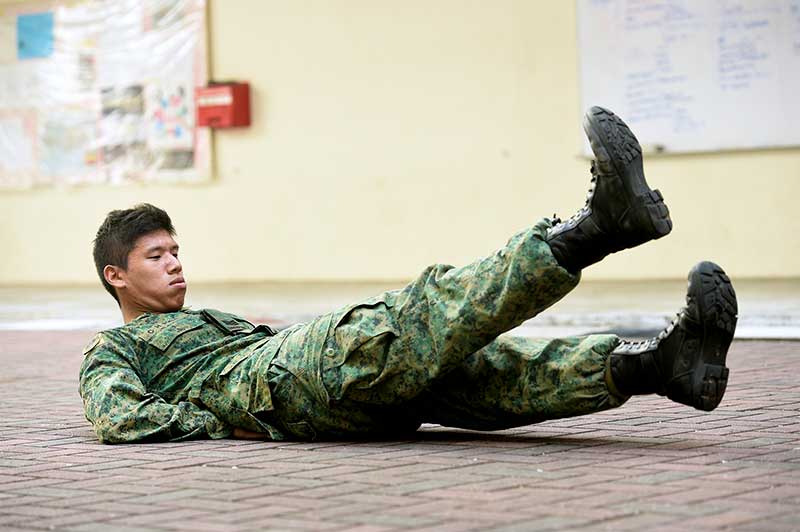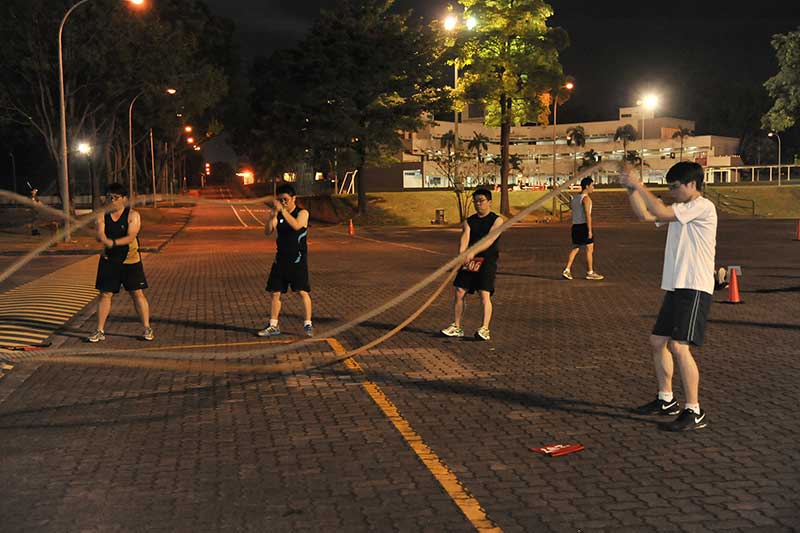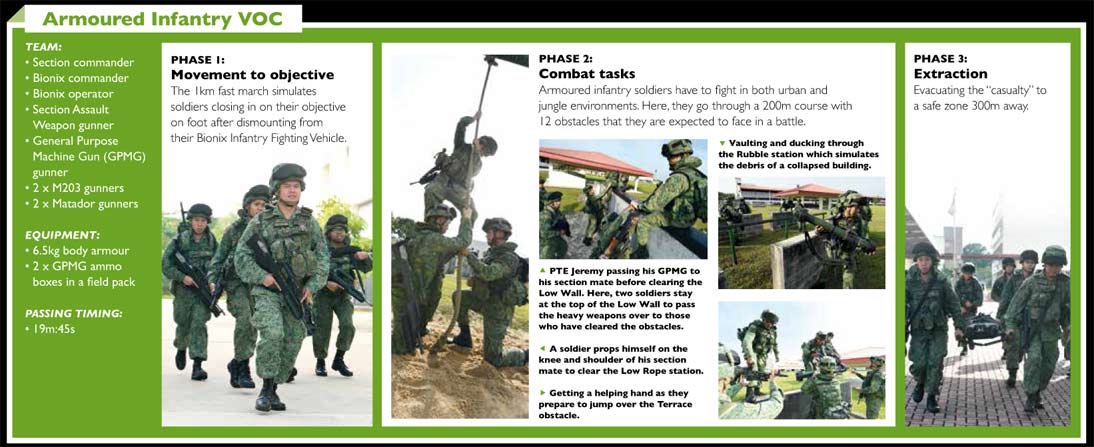OPS & TRAINING
FIT AND COMBAT READY
01 Apr 2015

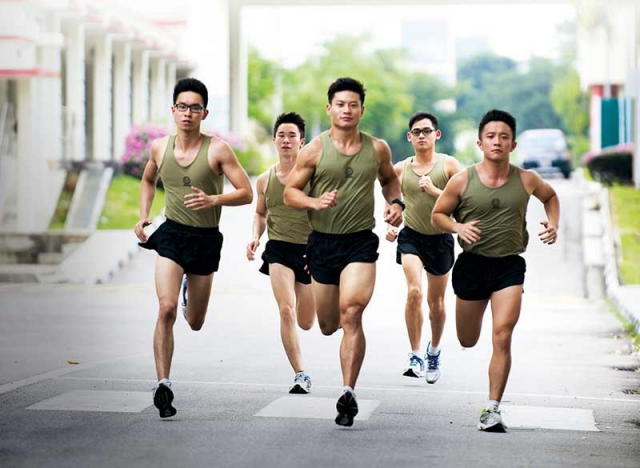
How do you shape the men in the street into fighting-fit soldiers in just a few months? PIONEER takes you through the Singapore Armed Forces' (SAF's) fitness road map to find out.
Private (PTE) Jeremy Jeevan and his platoon mates are marching at a furious pace to their objective. These armoured infantry men from 40th Battalion, Singapore Armoured Regiment (40 SAR) have been forced to travel on foot after their Bionix Infantry Fighting Vehicle was hit by enemy fire.
The journey through undulating terrain and thick vegetation is energy sapping, especially for PTE Jeevan who has to lug his 12.5kg General Purpose Machine Gun (GPMG). The unwieldy weapon puts tremendous stress on his small 1.6m frame.
His heart pounds harder with every step he takes, lactic acid building rapidly in his leg muscles, and soon he finds himself lagging behind the pack. But through sheer will power and with some help from his buddy, he makes it to the objective where he and his platoon mates must summon whatever energy left in their exhausted bodies for the final assault.
This may be just an exercise. But it shows the high combat fitness levels of these troopers. It's remarkable when you consider the fact that when PTE Jeremy first enlisted, he was clearly unfit.
"I had poor stamina, and I couldn't run. I never thought I could survive (through an exercise carrying a GPMG)," said the 22-year-old Full-time National Serviceman (NSF).
That our soldiers - most being national servicemen like PTE Jeevan - are able to endure extreme physical stress, and remain combat effective is not something that happens by chance. It takes a systematic approach backed by sports science.
Commanding Officer of the Army Fitness Centre (AFC), Lieutenant Colonel (LTC) Chia Geok Koon said that it is important for all newly-enlisted soldiers in the SAF to first build up their baseline fitness before they move on to develop combat-oriented fitness through physical training in combat gear.
This holistic fitness road map is based on two key principles of sports science: progressive training and specificity. The former refers to the gradual increase of training over time, while the latter refers to how you must train specifically for a certain task or exercise in order to become better at it.
For example, the new Individual Physical Proficiency Test (IPPT), rolled out by the SAF in April this year, measures physical attributes that are important for servicemen who, in general, need to carry heavy loads, run and dash.
The three-station format tests soldiers on the strength and endurance of their upper body, lower body, core and abdominals, as well as their cardiovascular fitness.
In particular, the new push-up station not only builds upper body strength, it also strengthens the core - the group of muscles required for functional movements. It is widely adopted by militaries worldwide including the United States Army.
The new format also allows servicemen to train without the need for specialised technique or equipment. Hence, they can easily incorporate these exercises into their daily routine.
In the past, servicemen had to find a chin-up bar to train for the old IPPT's chin-up station.
LTC Chia noted that the new IPPT is a good test of a soldier's baseline physical fitness that is relevant to the SAF. He explained: "In a military operation, there are numerous actions that you need to do: push, pull, squat, climb, run and more. But any test format can only measure a limited number of these fitness attributes.
"There is no best test format, except the one that suits our needs. What we need is a test protocol that is effective for our conscript army (and) that our servicemen can train for."
Combat-oriented fitness
But physical training alone does not make a soldier. While noting that good physical fitness contributes to combat fitness, LTC Chia explained that if you are not used to the combat loads or movements, your body will be uncoordinated and require more energy and effort when carrying out these tasks.
"As a result, you'll tire out easily. So we need to train operationally according to what our combat tasks require us to do," said the 44-year-old Guards Officer, who holds a degree in Sports Science.
"Most physical training involves lifting weights in gyms or doing callisthenics using your own body weight. You hardly carry loads and move the way you do in a combat environment."
This is where the Standard Obstacle Course (SOC) comes in. Unlike in the IPPT, a soldier has to don his No.4 combat uniform, helmet and Load Bearing Vest (LBV) as well as carry the Singapore Assault Rifle (SAR) 21 for the SOC. This extra weight adds physical stress and discomfort.
The 12-obstacle course simulates the jungle and urban operating environments to help soldiers gain coordination, mobility and confidence.
The Low Wall, for example, is a test of your muscular strength, while the Dodging Panels - a series of closely-spaced walls - hones your agility in going through a confined passage.
The last 300m sprint to the finishing line builds your anaerobic capacity or VO2 max - the maximum rate of oxygen consumption during exercise. It is an indication of your cardiorespiratory fitness. The passing timing for the course is 4m:30s for the commanders and 6m:00s for the men.
Even the fitter soldiers have described the experience as painful. 3rd Sergeant (3SG) Adriel Phua, a 22-year-old Bionix commander in 40 SAR who attained the Gold award for IPPT, said: "The last 300m is a killer. You have to really push yourself to the limit to meet the passing timing.
"It has trained me not to give up halfway, to fight on even when I am totally exhausted with all the heavy loads during outfield exercises."
LTC Chia explained that the SOC was designed to help soldiers deal with intense combat stress. "We simulate mental stress through the increase of intensity in training. That way, our soldiers build muscle strength...as well as resilience indirectly."
Vocation-specific training
The SOC measures the general baseline combat fitness of an individual. But each vocation in the Army carries out different missions in various operating environments. They need to develop different physical attributes to carry out their respective combat tasks. Thus a one-size-fits-all approach is not ideal.
Artillery men, for example, generally do not require as much stamina as their infantry counterparts. Instead, they need to have a strong core and upper body strength to carry artillery shells.
On the other hand, infantry men, who have to march for long distances, need strong lower limb strength and endurance. They also need to have strong anaerobic fitness to dash from point to point during an assault.
"We recognise that each vocation is different, and each has very specific requirements. That's why we have gone into vocation-specific training," said LTC Chia.
In 2010, the SAF introduced the Vocation Obstacle Course (VOC).
It is similar to the SOC, but soldiers have to work as a team and carry combat equipment unique to their vocation.
For instance, armoured infantry soldiers will go through the VOC with nine members: one section commander with six infantry men as well as a Bionix commander and a Bionix operator.
Each soldier has to wear body armour that weighs 6.5kg when going through the VOC. Their equipment includes a GPMG, the Matador anti-tank weapon that weighs 8.9kg, and SAR 21s with the M203 grenade launchers.
They will start with a 1km fast march, before clearing the 12 combat obstacles and ending with a 300m fast march where they will have to evacuate a wounded soldier (simulated using three filled jerry cans) on a stretcher. The entire course has to be completed within 19m:45s.
They have to be creative and work together to clear the obstacles. A soldier can also prop himself up on the knee and shoulder of his section mate to clear the Low Rope. Or take turns to carry the heavy weapons during the 1km fast march or at any point of the VOC.
Section Commander 3SG Eu Yiu Siung felt that the VOC is a realistic form of training that prepares them for outfield exercises and real battle.
"We would definitely meet with these kinds of situations. There will be casualties and some men might not be able to carry the loads, so we would have to help to carry them and complete the mission," said the 22-year-old Regular.
VOC variety
In contrast, the Explosive Ordnance Disposal (EOD) personnel from 36th Battalion, Singapore Combat Engineers (36 SCE) will go through a completely different VOC. Unlike the infantry soldiers, their job is much more delicate: disposing of bombs.
Each trainee has to wear the EOD 9 bomb suit and helmet that weigh a hefty 31kg. Working in pairs, they walk up and down a four-storey building that simulates the EOD command post, and have to overcome five obstacles that test their mobility, agility, and balance. They will then dispose of a simulated Improvised Explosive Device (IED).
"You are tested according to what your combat tasks require you to do," said LTC Chia. "Armoured infantry will largely need the speed, strength, power and endurance to last them through the journey to the objective and the assault."
He added: "But for the EOD personnel, what they require most is the ability to handle the weight of the protective suit. It is very heavy, but they don't need to move very fast. Instead, they need to be very meticulous in their actions.
"So they would need to build muscle endurance to handle the weight and, of course, the heat."
Master Sergeant (MSG) Victor Er, 28, likens the EOD 9 bomb suit to a sauna. "I can feel the burning sensation, and I am always sweating. But once I take off the suit, it's as if I am in winter suddenly," said the EOD team commander.
The heat makes his task difficult. Some personnel, especially the rookies, may even feel claustrophobic in the bomb suit. The VOC helps them to gain confidence working in a bomb suit.
2nd Lieutenant Vairanvan Ramanathan, a platoon 2nd-in-command (2IC), said the VOC puts him through the kind of pressure that he would be likely to face if called upon to dispose of a real IED.
"You'll start to pant, and your visibility gets lower as the helmet's visor fogs up because of your breath," said the 19-year-old NSF. "If you don't control yourself, you may panic and things may start to go haywire. You need a lot of confidence in yourself, you need to be very sure of what you are doing and remain calm and composed."
Work-in-progress
The roll-out of the new IPPT marks the completion of the SAF fitness training road map, following the revamp of the SOC and the introduction of the VOC and VREs in 2010.
LTC Chia, however, noted that the fitness road map will always be a work-in-progress as the SAF is constantly strengthening its training programmes. For example, AFC is currently reviewing the fitness training syllabus for the Infantry Formation, with the aim of introducing a new programme this year.
It is also looking into making fitness training for Operationally Ready National Servicemen (NSmen) even more engaging and purposeful.
Last year, the SAF started a new IPPT Preparatory Training (IPT) Programme that allows NSmen to choose from a variety of training to meet their fitness needs. These include metabolic circuit training, sports- and games-based training as well as spin classes.
Due to time constraints, NS units are likely to focus on combat training during In-Camp Training (ICT) sessions that usually last up to two weeks. The SAF is also looking into how they can include more fitness training during ICT.
For example, NSmen from the 21st Singapore Infantry Brigade (21 SIB) tried out a different fitness regime during their ICT in January this year. They played Frisbee for cardio training, and went through tyre training where they had to work in teams to move truck tyres across the parade square. They also did the beep test, a 20m shuttle run test widely used by sports professionals.
2SG (NS) Lie Zhi Jian, a Military Police in 21 SIB, welcomed the new change, saying: "These exercises are interesting, just like the boot camps that are offered in commercial gyms. I never had so much fitness training in previous ICTs; I certainly came out fitter this time round."
With the enhanced slew of physical and combat fitness training tailored for new recruits, active servicemen and NSmen from every vocation, the SAF's comprehensive fitness road map is practical, purposeful and developed based on proven sports science principles, said LTC Chia.
"In our military context, we are training towards operational fitness. When our soldiers understand this logic and the purpose behind the training, I believe they will do more, and carry it through, from their active to NS days."
- LTC Chia
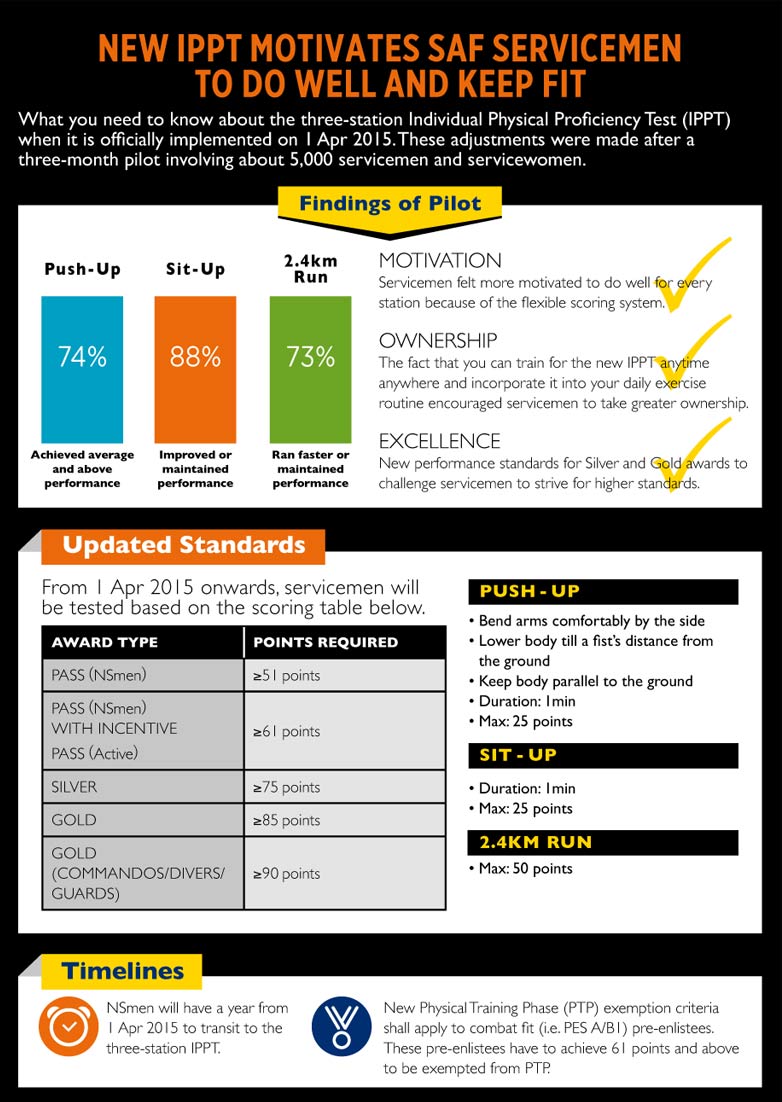
Fitness apps
Make use of this free pocket trainer to ace your IPPT!
MyIPPT:
Provides two circuit training programmes for a full-body workout, complete with instructions and timer.
The app also provides push-up and sit-up counters. Each push-up is registered using your smartphone's touch sensor. You ll have to lower your body all the way down. For sit-ups, place your phone flat against your chest in landscape mode and hold it there with your hands.
Ace your IPPT!
To train for the new IPPT, you could just do more push-ups and sit-ups, and run more. But if you want more variety, try these exercises:
Push-up
Decline push-up:
Elevate your feet on a stable platform like a bench while doing push-ups.
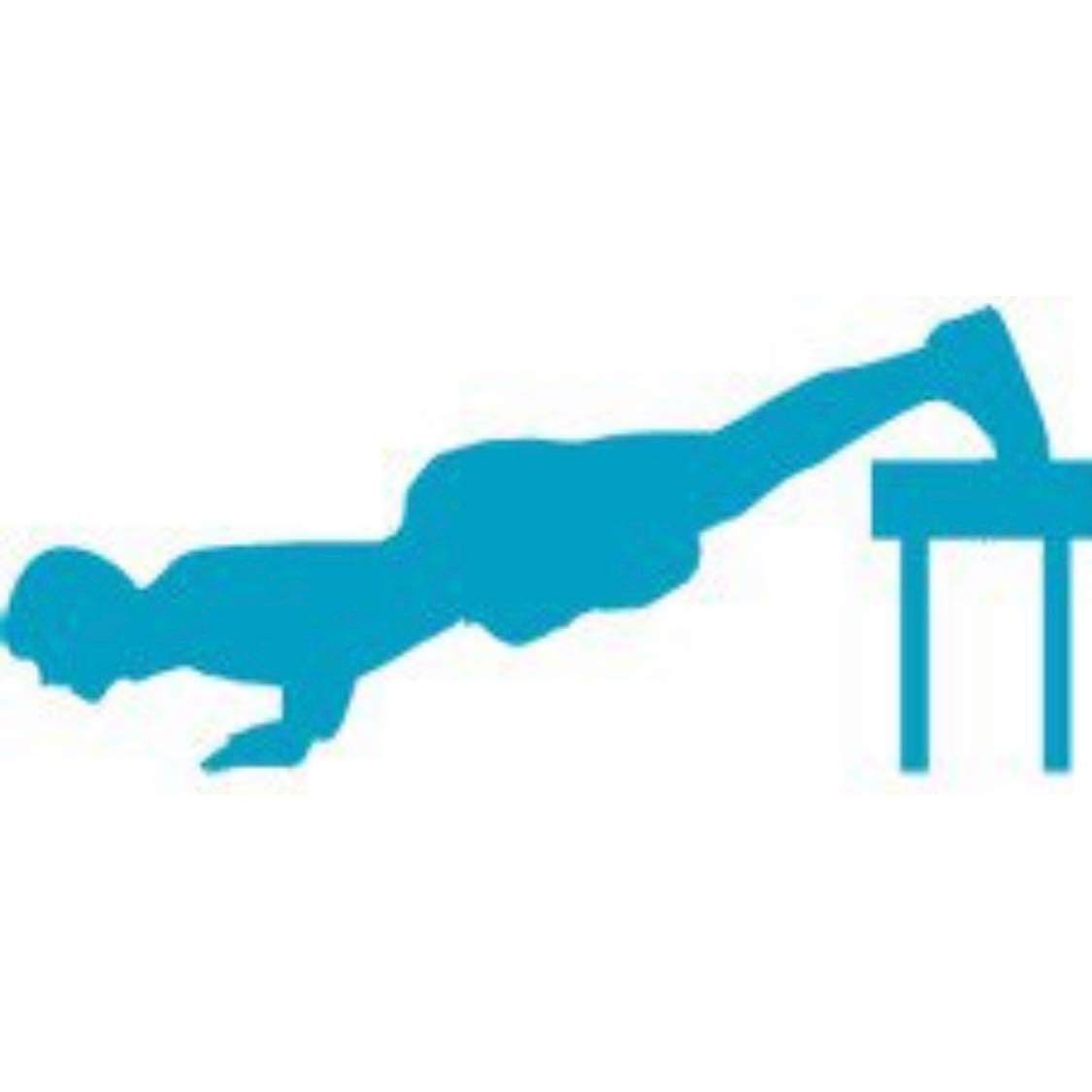
Sit-up
Crunches:
Roll shoulders off the floor as you contract your abs and exhale. Lower back should remain on the ground.
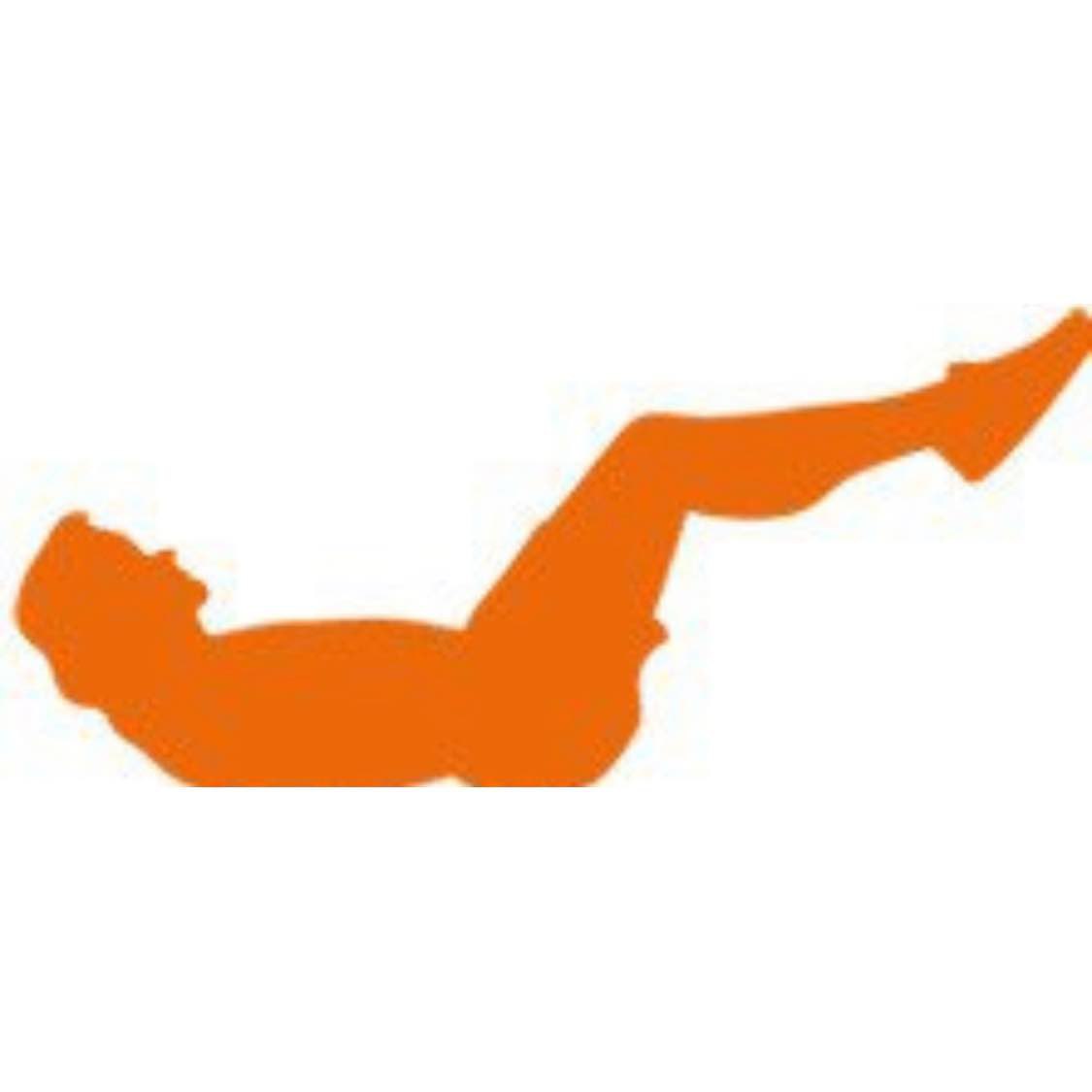
2.4km run
Interval run:
Run 400m in 2min, then rest for 2min. Repeat for 6 laps.

What is the Vocation Obstacle Course (VOC)?
The VOC hones combat fitness that is unique to each vocation. It consists of three phases: movement to objective, combat tatsks, and extraction. Just like in real operation in a team with their section weapon and equipment. Here's a look at the armoured infantry VOC and explosive ordanance disposal (EOD) VOC.
ALSO READ IN OPS & TRAINING
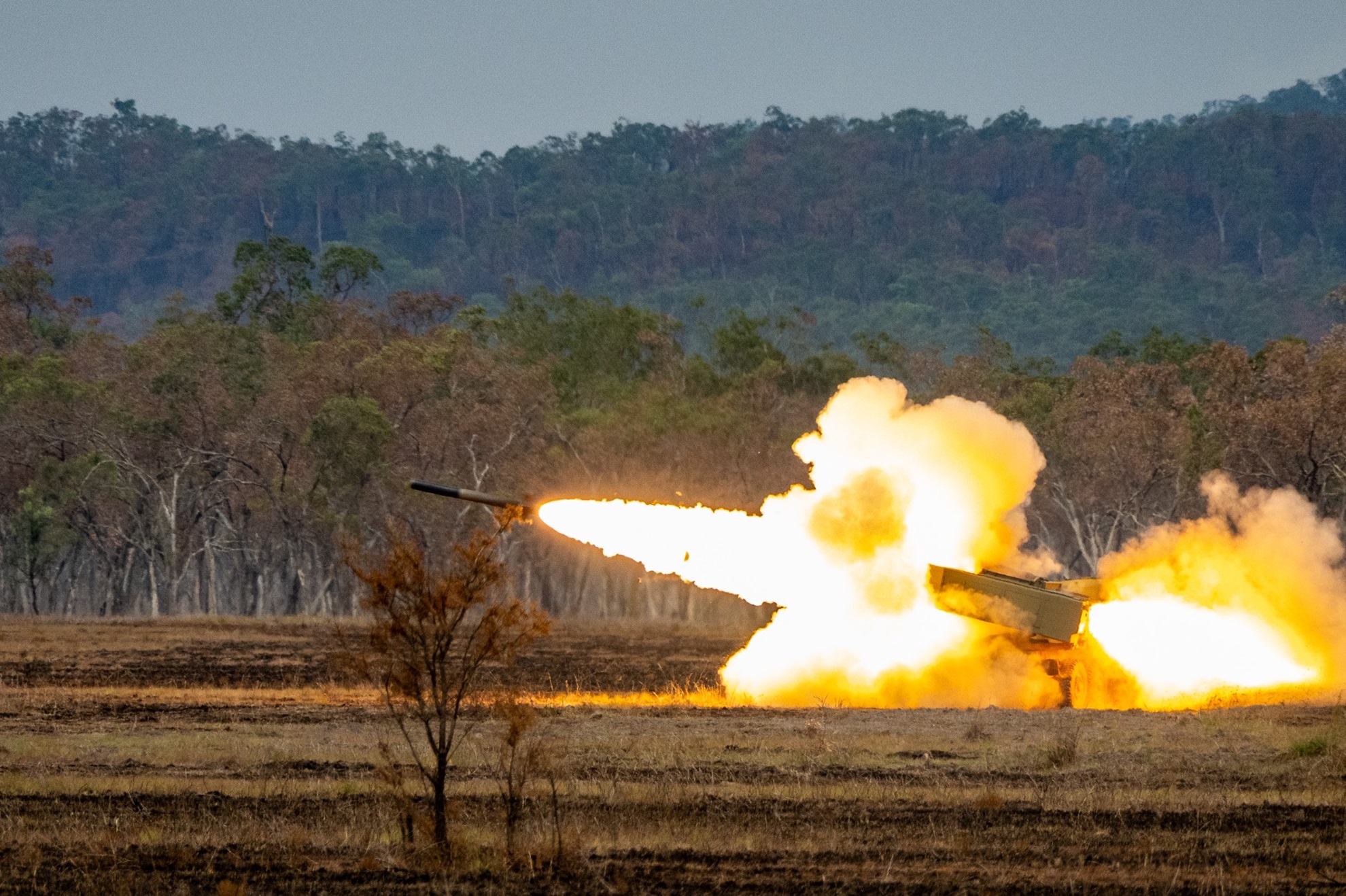
Exercise Wallaby 2025: To see better, shoot faster
31 Oct 2025
The SAF focuses on complex strike missions and multi-domain integration in Exercise Wallaby 2025, the 35th edition of its largest unilateral overseas exercise.
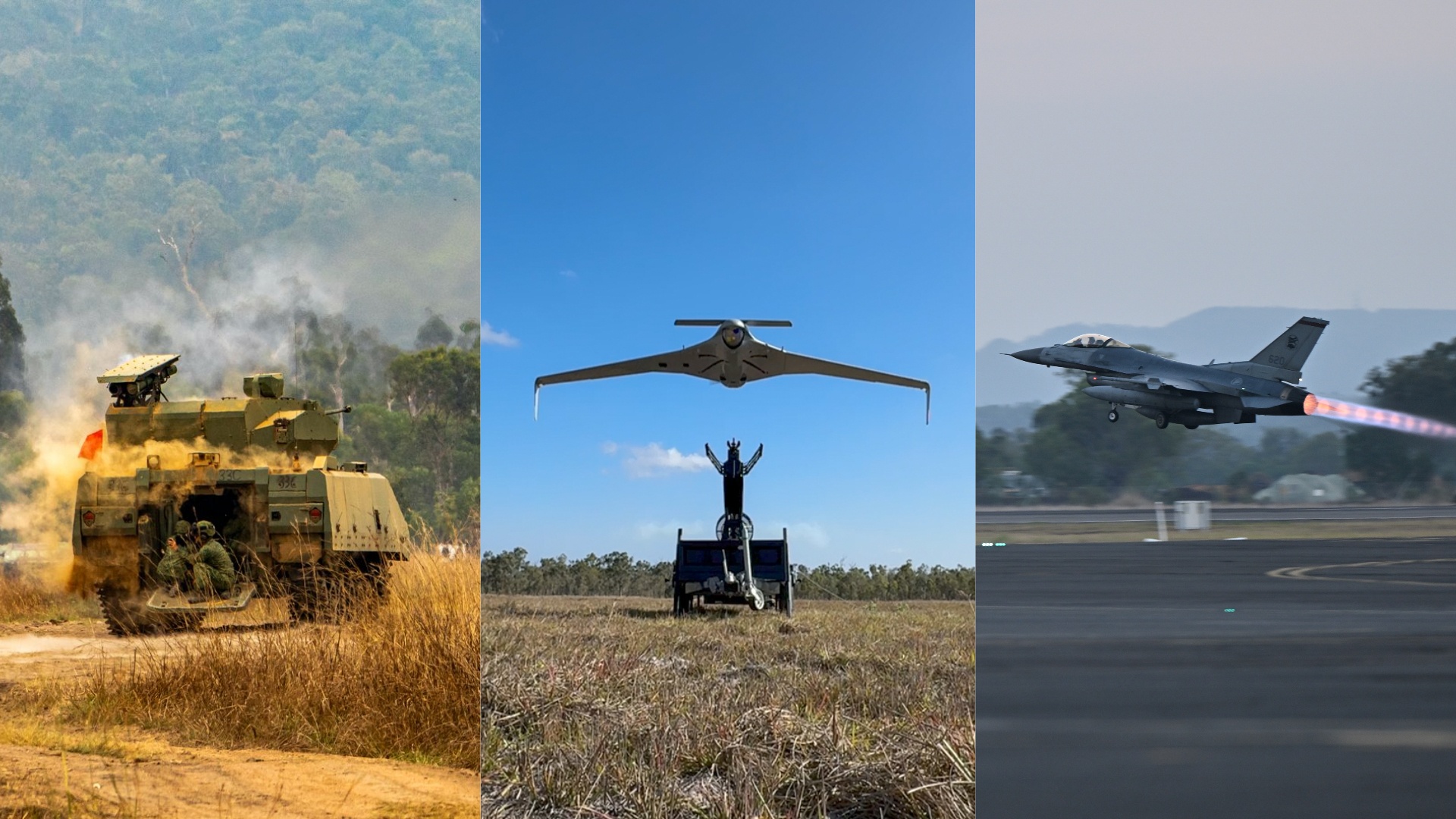
Ex Wallaby 25 – Greater Integration and Complexity
25 Oct 2025
The 35th edition of the SAF’s largest unilateral overseas exercise is an opportunity for expanded scale and deeper integration towards an effective, networked fighting force.

Ex Forging Sabre ramps up use of unmanned assets in integrated strike operations
12 Sep 2025
In this 10th edition of Exercise Forging Sabre, the SAF sharpened its cutting edge for the dynamic modern battlefield, with expanded integration between manned and unmanned platforms.

